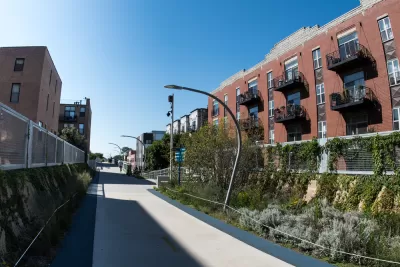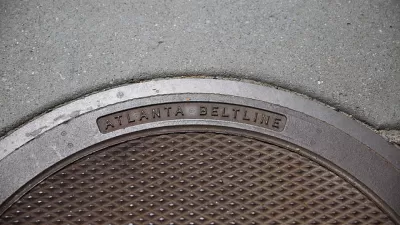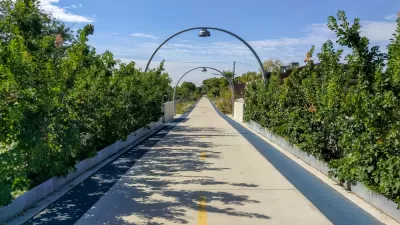Chicago and Atlanta both approved development moratoriums in areas surrounding new urban amenities this year. Other cities could soon add to the number.

"Seeking to curtail gentrification and displacement, Atlanta and Chicago put construction and demolition moratoriums in place early this year," according to an article by Haisteen Willis that examines these two examples as evidence of larger trends in the policy response to gentrification in neighborhoods facing new development interest.
The Chicago and Atlanta examples both have linear parks on old rail rights-of-way in common—the Beltline in Atlanta and the 606 in Chicago.
"In Atlanta, construction permits were banned until Dec. 4 to slow investor activity near the western portions of the Beltline, a trail system under construction that is laid over old railroad tracks and driving up the value of real estate everywhere it winds," according to Willis.
"Chicago made a similar move, prohibiting until February 2021 demolition of old two- and four-flats, which were being torn down in favor of large single-family houses, in the western portions of the 606 trail." (Planetizen picked up news of the Chicago moratorium when it was still a proposal in the City Council.)
According to Willis, neighborhoods in New York City and Gainesville, Florida could soon also add development moratoriums in response to housing projects proposed in low-income neighborhoods of color.
While local neighborhood groups and some politicians support the moratoriums in the name of preserving community identity and preventing displacement caused by rising rents and taxes, developers and construction companies say that moratoriums create too much drag on an already sluggish economy.
FULL STORY: Building bans and affordable housing: A construction conundrum

Study: Maui’s Plan to Convert Vacation Rentals to Long-Term Housing Could Cause Nearly $1 Billion Economic Loss
The plan would reduce visitor accommodation by 25,% resulting in 1,900 jobs lost.

North Texas Transit Leaders Tout Benefits of TOD for Growing Region
At a summit focused on transit-oriented development, policymakers discussed how North Texas’ expanded light rail system can serve as a tool for economic growth.

Why Should We Subsidize Public Transportation?
Many public transit agencies face financial stress due to rising costs, declining fare revenue, and declining subsidies. Transit advocates must provide a strong business case for increasing public transit funding.

How to Make US Trains Faster
Changes to boarding platforms and a switch to electric trains could improve U.S. passenger rail service without the added cost of high-speed rail.

Columbia’s Revitalized ‘Loop’ Is a Hub for Local Entrepreneurs
A focus on small businesses is helping a commercial corridor in Columbia, Missouri thrive.

Invasive Insect Threatens Minnesota’s Ash Forests
The Emerald Ash Borer is a rapidly spreading invasive pest threatening Minnesota’s ash trees, and homeowners are encouraged to plant diverse replacement species, avoid moving ash firewood, and monitor for signs of infestation.
Urban Design for Planners 1: Software Tools
This six-course series explores essential urban design concepts using open source software and equips planners with the tools they need to participate fully in the urban design process.
Planning for Universal Design
Learn the tools for implementing Universal Design in planning regulations.
Ascent Environmental
Borough of Carlisle
Institute for Housing and Urban Development Studies (IHS)
City of Grandview
Harvard GSD Executive Education
Toledo-Lucas County Plan Commissions
Salt Lake City
NYU Wagner Graduate School of Public Service





























